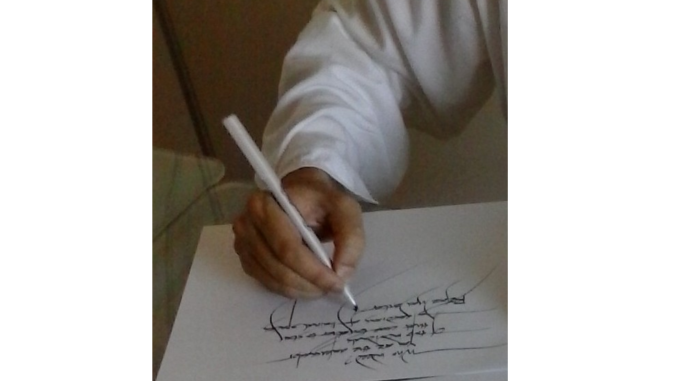
Author at work. Photo courtesy Summi
Contemplating Kahani Calligraphically
![]()
Do we have free will or does destiny determine our affairs?
The argument has been distilled by Amitabh Bhattacharya:
Kya pata hum mein hai kahani
Ya hain kahani mein hum?
Perhaps the timeless question arises given the nature of language itself. Language, like music, is linear: one note follows another, one word after another. In the verse kahani occurs twice, thus appearing as two different stories. Which one is true?
If only language could be spatial like architecture, perhaps the paradox would be resolved. For this we turn to calligraphy that has the knack of turning the sequential, simultaneous; the temporal, spatial.
With Mohan Kanann’s voice of yearning, Pritam’s soundtrack and Aamir Khan’s choreography of the free-falling feather, you feel that, somehow, both kahanis could be true (and not only for Laal Singh Chaddha and Forrest Gump).
The calligrapher in synch with that feeling inscribes kahani only once. The word now occurs at the intersection of two sentences, at the intersection of free will and destiny that may themselves be following, or falling into, different paths.
The story of your life is singular, occurring as it does at the horizon where stories synchronize.
***
Laal Singh Chaddha | Kahani Song | Aamir | Kareena | Pritam | Amitabh |
******
H Masud Taj is an Adjunct Professor of Architecture at Azrieli School of Architecture & Urbanism and continues his practice as an architect, poet and calligrapher. His writings can be accessed on Academia. H. Masud Taj in The Beacon

Leave a Reply